Fresh Pastured Raw Cow's Milk Curd, Green and Purple Asparagus, Broccoli Rabe Greens and Flowers, Hyssop, Mint, Pea Tendrils, Lilac Blossoms, Local Honey
When milk separates, it does so into two distinct parts, the whey which is the liquid and the curd which is the solid. This separation is most easily accomplished by raising the acidity of the milk, in this case with lemon juice and vinegar. Separating the curds from the whey is the first step in any cheese-making process. So this is the most simple type of cheese, if you can even call it cheese, that one can make. This stuff is delicious, and we eat it on just about everything. Its great for breakfast with fruit and granola, for dinner with pasta, or as you see here as a simple salad.
Making the curd is a fairly simple process, all you really need is a little time and patience. You pour 6 cups of milk and 2 cups of cream into a pot and gently heat it to 185 degrees. At this point it is seasoned with salt and 2 tablespoons of the lemon juice and/or vinegar is added and stirred in. Bring the liquid up to 195 and hold it there for 20 to 30 minutes until the curd separates. Strain the curd through a cheese cloth the separate the whey. The curd can be used immediately, or left to strain overnight in the refrigerator for a thicker firmer texture.
After the curd was strained, in this case for 2 hours, I placed a mound of it on the plate and made an indent with a spoon. I filled the hole with honey. I poached some asparagus tips and ran some whole stalks through a mandolin. The asparagus was then simply seasoned and tossed in lemon juice and olive oil. And as you can see I simply built the salad by places the ingredients in and around the mound of curd.
Product-
Raw Jersey Cow's Milk Curd - Hillacres Pride
Organic Green and Purple Asparagus - Culton Organics
Organic Lilac Blossoms - Queen's Farm
Organic Flowering Broccoli Rabe - Blooming Glenn Farm
Organic Pea Tendrils - Queen's Farm
Organic Mint - My Garden
Organic Annis Hysopp - My Garden
Organic Local Honey - Beechwood Orchards
Making the curd is a fairly simple process, all you really need is a little time and patience. You pour 6 cups of milk and 2 cups of cream into a pot and gently heat it to 185 degrees. At this point it is seasoned with salt and 2 tablespoons of the lemon juice and/or vinegar is added and stirred in. Bring the liquid up to 195 and hold it there for 20 to 30 minutes until the curd separates. Strain the curd through a cheese cloth the separate the whey. The curd can be used immediately, or left to strain overnight in the refrigerator for a thicker firmer texture.
After the curd was strained, in this case for 2 hours, I placed a mound of it on the plate and made an indent with a spoon. I filled the hole with honey. I poached some asparagus tips and ran some whole stalks through a mandolin. The asparagus was then simply seasoned and tossed in lemon juice and olive oil. And as you can see I simply built the salad by places the ingredients in and around the mound of curd.
Product-
Raw Jersey Cow's Milk Curd - Hillacres Pride
Organic Green and Purple Asparagus - Culton Organics
Organic Lilac Blossoms - Queen's Farm
Organic Flowering Broccoli Rabe - Blooming Glenn Farm
Organic Pea Tendrils - Queen's Farm
Organic Mint - My Garden
Organic Annis Hysopp - My Garden
Organic Local Honey - Beechwood Orchards
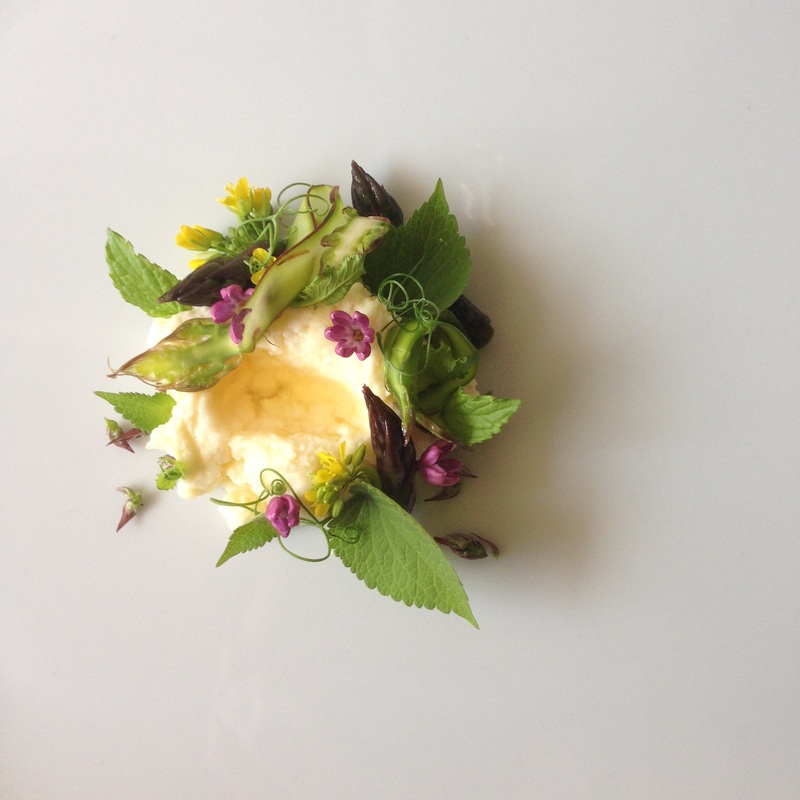
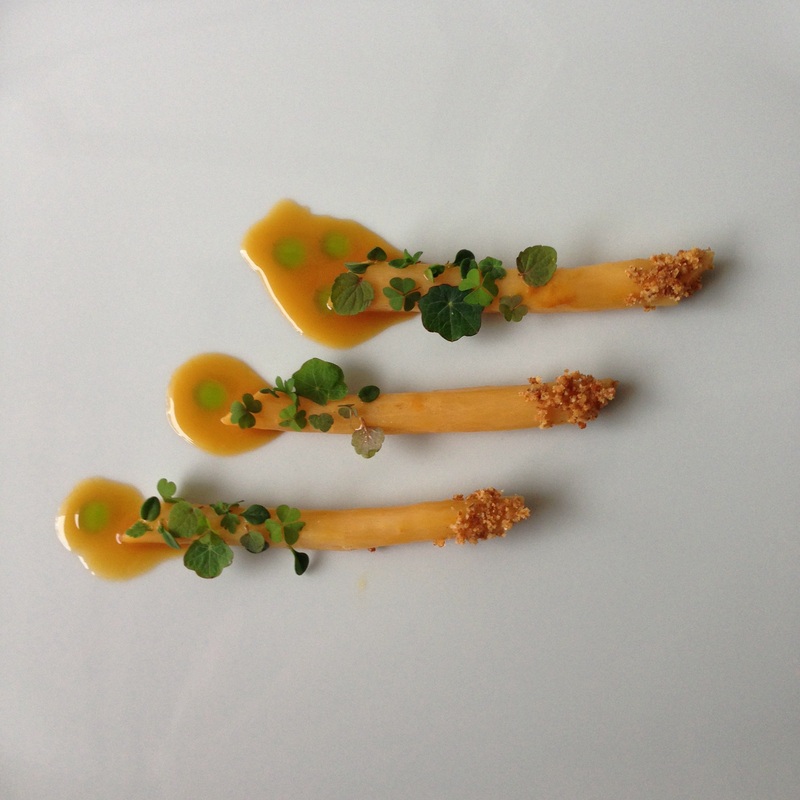
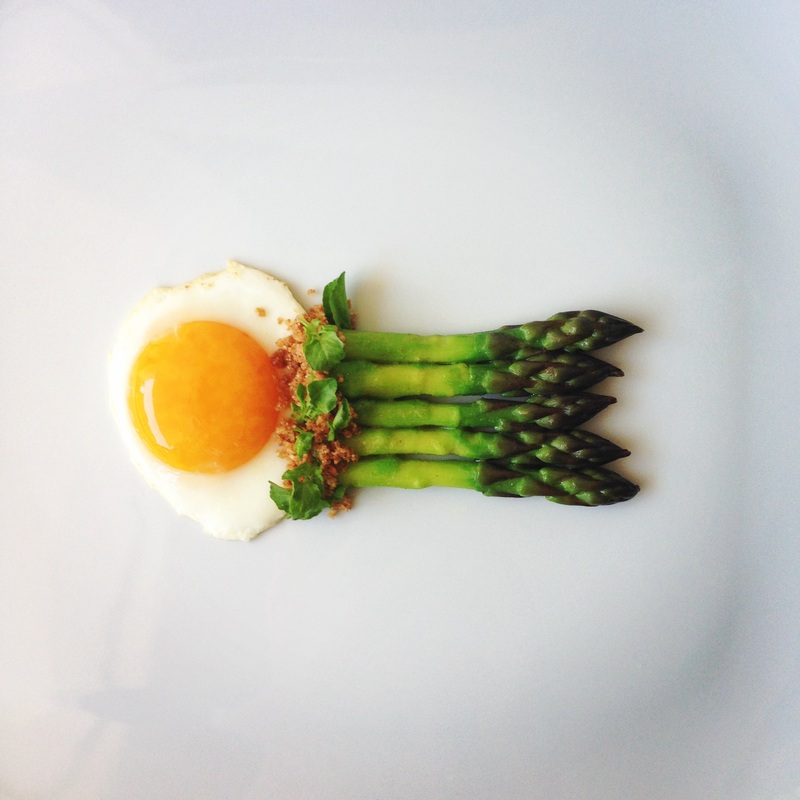
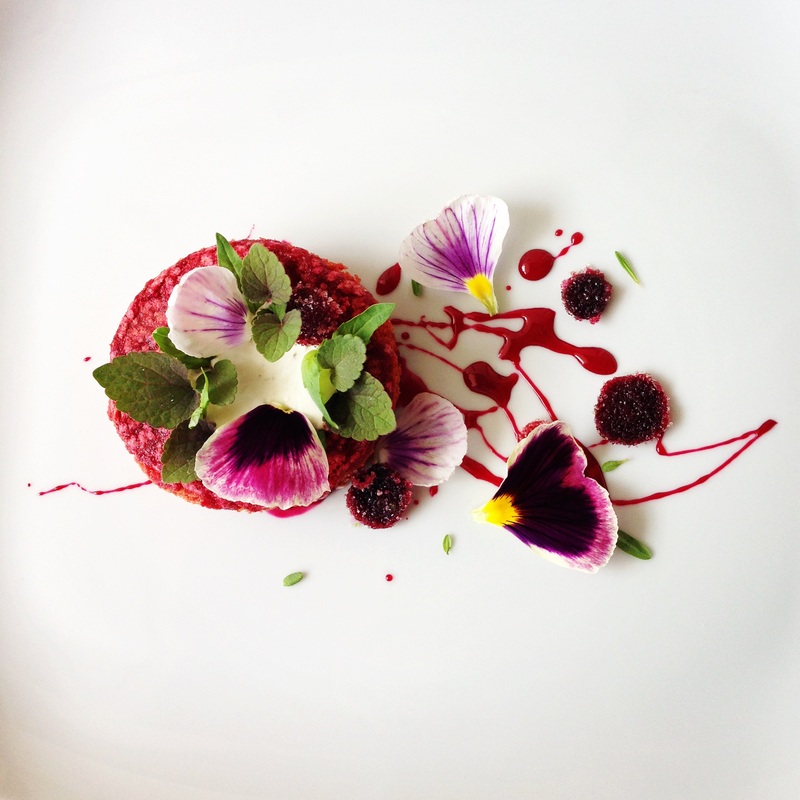
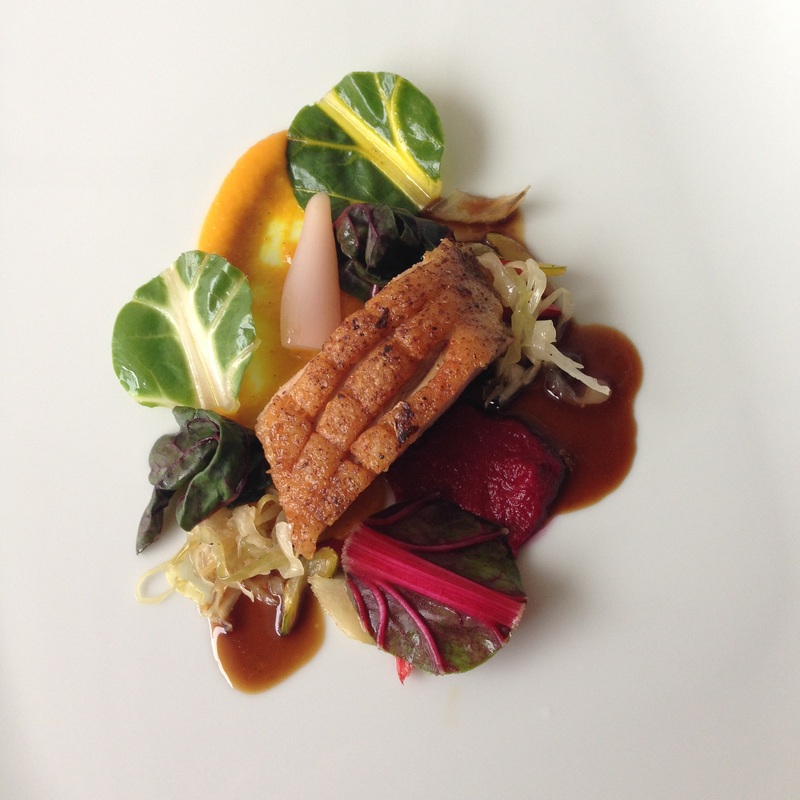
 RSS Feed
RSS Feed